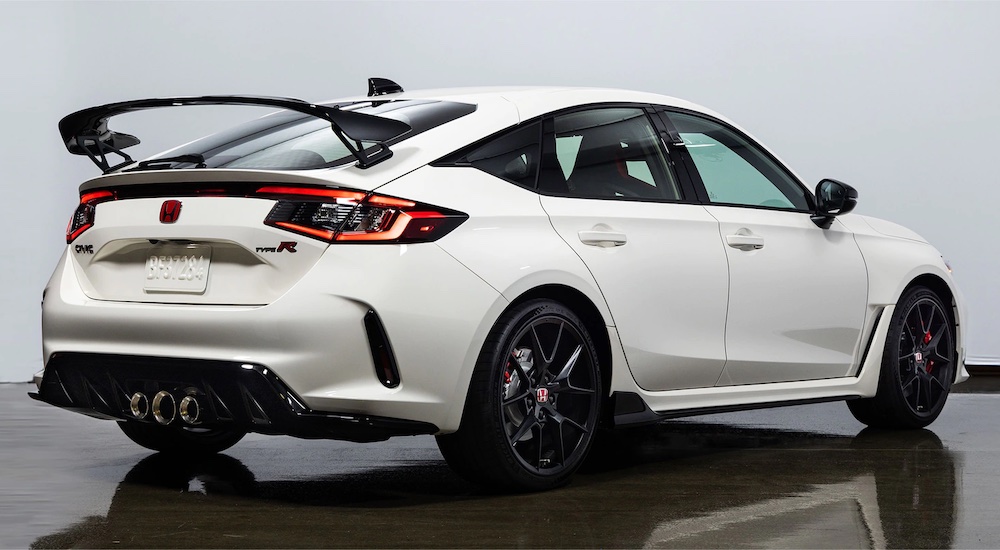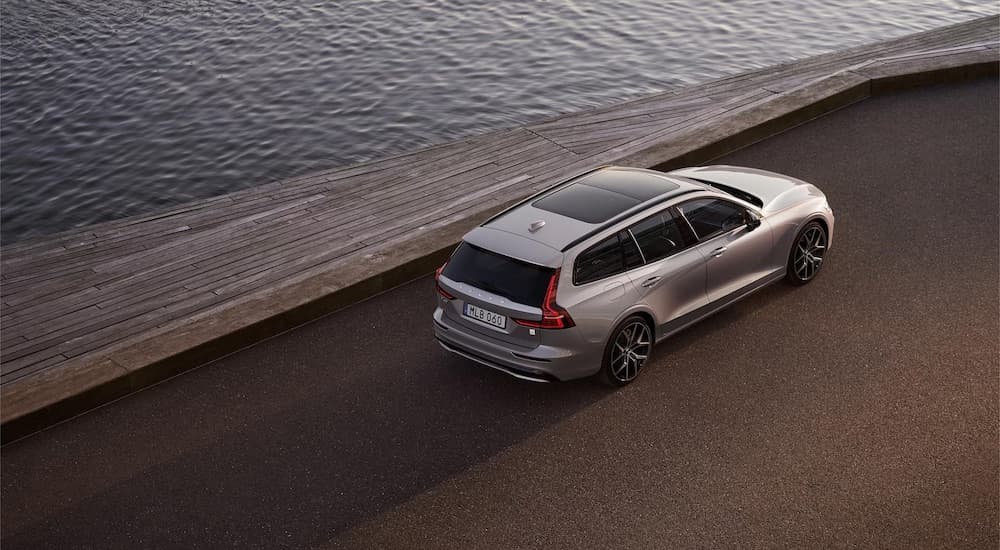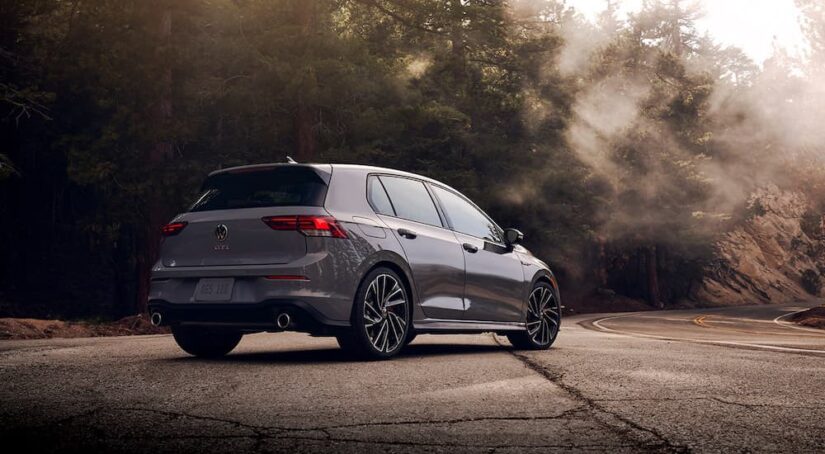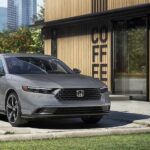In middle school, my best friend Annie and I would always load into her parents’ wood-paneled station wagon any time we had anywhere to go. It was large and unsightly, but back in the 1990s, it was the go-to vehicle for families. The quintessential grocery getter, the station wagon seemed to be the alternative to the minivan, which I also rode in a lot back in those days. I can’t help but wonder what exactly drew so many people to these ugly models because, let’s face it, were you even a station wagon owner if yours wasn’t covered in wood from top to bottom?
Up until recently, I thought that station wagons vanished off the face of the earth, replaced by SUVs that were basically station wagons in disguise. The truth is there are station wagons that still roam the streets to this day, blending in with society and offering their occupants the same great features they did back when I rode to the mall in one every Friday night. There is also a large number of hatchbacks that offer a similar design and features in a sportier package. Contrary to popular belief, a hatchback isn’t just another name for a wagon; it’s actually a model all its own. Let me bring you up to speed on what today’s hatches and wagons look like and how they differ from one another.
Defining a Hatchback
I think the best way to describe a hatchback is to take a station wagon and shrink its length down just a smidge. Hatchbacks are shorter than their station wagon brothers, with less of a rear overhang. Many hatches also have fewer windows along their side profile, with most models on the market showcasing a set of windows at the front and a set at the rear. However, hatchbacks still exhibit a two-box design, with one box housing its engine components and one box housing its occupants and all of their cargo. There’s no trunk; instead, the cargo hold resides behind the backseat, just like a station wagon.
It doesn’t seem as though there are that many differences between a hatchback and a station wagon, especially when you look at them side by side, but the industry begs to differ. I feel like hatchbacks are just more modern station wagons and ways for automakers to sell these models without the stigma associated with the uncool grocery-getters of my youth. Still, you see plenty of hatchbacks passing you by on the streets. I think the biggest advantage is that they tend to be smaller and more car-like while offering more cargo volume, which appeals to many drivers who want an easy-to-drive vehicle with more space than a sedan. In all honesty, once I took that into consideration, I’ve decided that I don’t hate the hatch—I could see myself trading in my compact sedan for one of these bad boys, and if you’re like me, you may also want to consider a hatchback.

There Are More Hatchbacks Than You’d Think
Many drivers don’t realize how many hatchback models there are out there because so many of them look very similar to sedans. Take the Honda Civic Hatch, for instance, as this model exhibits a sharply sloping roof almost indistinguishable from the Honda Civic Sedan. Many drivers wouldn’t even think of it as a hatchback unless they saw the large rear hatch open. People love the Civic Hatch because it’s affordable, compact, and really great on gas, making it perfect for those unfortunate souls who have a hectic drive to work each day.
Another famous hatch that you may not immediately associate with the term is the Toyota Prius, which quite literally put hybrids on the map back in the early 2000s. It’s exceptionally efficient, has more cargo room than you’d expect, and newer models are downright stylish. On the other end of the spectrum, there are plenty of boxy traditional hatchbacks, like the Toyota Corolla Hatch and Subaru Impreza, that trade style for more cargo space. There are even performance models like the VW GTI and luxury hatchbacks like the BMW 4 Series Gran Coupe.
To me, hatchbacks seem like really good everyday commuters. They’re a little bit too small for families, at least families with multiple kids, but they’re exceptionally good at navigating through traffic with their small sizes, and of course, they’re usually ultra-efficient. Most importantly, they offer a more accommodating cargo hold, which makes loading and unloading gear a lot easier than trying to stuff it all in a trunk. I think a hatch is a good idea for those who want to ditch their sedan.
What Makes a Station Wagon?
I mentioned that hatchbacks are pretty much smaller versions of station wagons, which means that one of the biggest defining factors of a wagon is its longer design. This allows them to offer more room inside for people and gear. This also makes families very happy, further solidifying the wagon’s hold on families for as long as I can remember. A station wagon typically has more windows along its side than a hatch, with one set in front, one in the middle, and a third set for its cargo hold. You’ll also find that a station wagon’s roof will extend past where its passengers are seated and into the cargo hold.
To put it simply, station wagons are slightly larger than hatchbacks, with a stretched design that includes more windows and an additional pillar that’s situated at the rear. Due to this larger design, a station wagon has even better grocery-getting skills than a hatch and is more accommodating for more people. Personally, I’m not a fan of a longer vehicle since I’m used to a compact sedan, which pulls me toward a hatchback more than a wagon. However, I think that families can benefit more from this design than they can from hatches, as hatchbacks are a tad too small, especially for those with multiple children.

The Modern-Day Wagon
Unfortunately for those like me who grew up in the 1990s, you won’t be seeing any new wood-paneled wagons gracing dealership lots. What you will see, however, are stylish models that continue to add value to the daily drive. In fact, it seems that luxury brands produce the majority of modern wagons, with models from Audi, Porsche, Volvo, and others hitting the pavement and offering enhanced practicality for the daily drive. Station wagons appeal to those who need more space in their vehicles but don’t desire large SUVs that are difficult to maneuver around town. They want cargo space, a roomy cabin, and a safe design, which is why I maintain that station wagons continue to be top options for families everywhere.
It’s too bad we no longer get to experience the wood-inspired look that I got to enjoy back in the day. However, they do say that trends always come full circle, so we’ll see what happens. For now, drivers have the hatchback and the station wagon when they’re looking for accommodating vehicles that are easy to drive and meet all their needs on the road. I think I’m going to hold onto my compact sedan, but if I see one of those grocery-getters from 1997, I may just cave and buy one for the sense of nostalgia.



